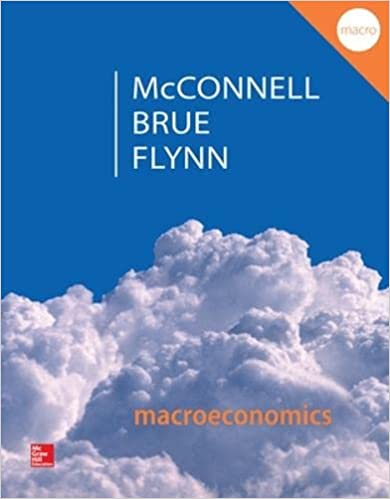
Macroeconomics 20th Edition by Campbell McConnell ,Stanley Brue ,Sean Flynn
Edition 20ISBN: 978-0077660772
Macroeconomics 20th Edition by Campbell McConnell ,Stanley Brue ,Sean Flynn
Edition 20ISBN: 978-0077660772 Exercise 2
State (a) a positive economic statement of your choice, and then (b) a normative economic statement relating to your first statement.
Explanation
Here, first we need to differentiate positive and normative economics, which can be summed up as follows:
1. Positive economics focuses on facts and cause-and-effect relationships while normative economics focuses on value judgments and desirability of certain aspects of the economy.
2. Positive economics is concerned mainly with "what is", whereas normative economics is concerned with "what ought to be".
3. Positive economics is called as descriptive economics, while normative economics is called as policy economics.
Based on the above differentiation the following are the assumed statements that differentiate positive and normative economics:
1. Positive statement: A rise in consumer's income will lead to a rise in demand of gold.
Normative statement: It is expected to increase in demand of gold next quarter.
2. Positive statement: the government is trying to reduce unemployment level in the country.
Normative statement: the government should try to reduce unemployment level in the economy.
3. Positive statement: "China's consumption is one third of its GDP."
Normative statement: "China should increase its consumption to improve the living standard of its people."
1. Positive economics focuses on facts and cause-and-effect relationships while normative economics focuses on value judgments and desirability of certain aspects of the economy.
2. Positive economics is concerned mainly with "what is", whereas normative economics is concerned with "what ought to be".
3. Positive economics is called as descriptive economics, while normative economics is called as policy economics.
Based on the above differentiation the following are the assumed statements that differentiate positive and normative economics:
1. Positive statement: A rise in consumer's income will lead to a rise in demand of gold.
Normative statement: It is expected to increase in demand of gold next quarter.
2. Positive statement: the government is trying to reduce unemployment level in the country.
Normative statement: the government should try to reduce unemployment level in the economy.
3. Positive statement: "China's consumption is one third of its GDP."
Normative statement: "China should increase its consumption to improve the living standard of its people."
Macroeconomics 20th Edition by Campbell McConnell ,Stanley Brue ,Sean Flynn
Why don’t you like this exercise?
Other Minimum 8 character and maximum 255 character
Character 255


